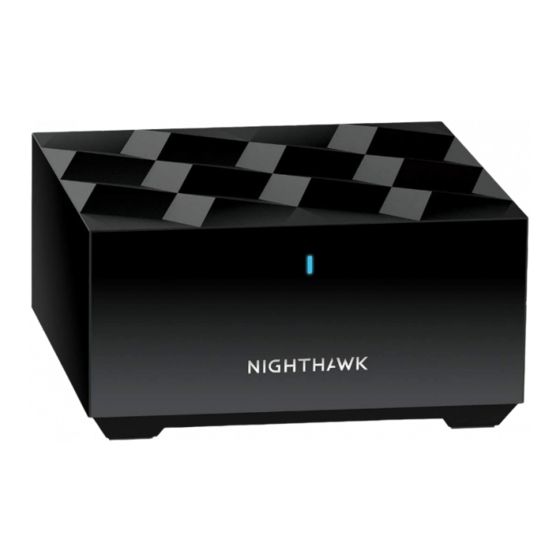
NETGEAR Nighthawk Mesh WiFi 6 System Manuals
Manuals and User Guides for NETGEAR Nighthawk Mesh WiFi 6 System. We have 2 NETGEAR Nighthawk Mesh WiFi 6 System manuals available for free PDF download: User Manual
NETGEAR Nighthawk Mesh WiFi 6 System User Manual (149 pages)
Brand: NETGEAR
|
Category: Network Router
|
Size: 1.04 MB
Table of Contents
Advertisement
NETGEAR Nighthawk Mesh WiFi 6 System User Manual (130 pages)
Brand: NETGEAR
|
Category: Network Hardware
|
Size: 3.45 MB

